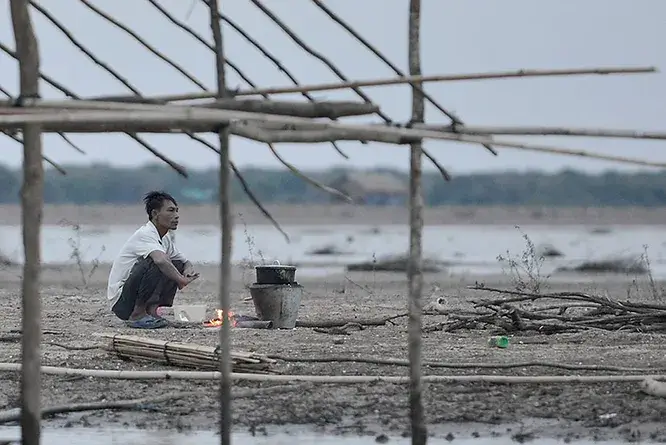As you may know, the Tonle Sap lake, the largest body of water in SE Asia and the home of the floating villages of Siem Reap, is unique in that the water levels change based on the season. When it is the rainy season in Cambodia they will swell several meters high but, when the rain stops, the water levels slowly recede. In addition, just like the rest of the world, the sunrise and sunset changes depending on the time of year.
Due to the change in water levels and late sunset our tour of the floating village slightly changes logistically from that listed on our website. Below you will find an updated itinerary for the month of June, 2017:
-
Guests leave Siem Reap slightly later – between 2:30 and 2:45 – but still make the same stops on the way (sticky rice, donuts, and sometimes a market tour). The reason we leave slightly later is so we can try to catch the beginning of the sunset which sets later during this time of the year.
-
Just as we do during the Rainy Season Tour, we will visit our school in a stilted home. We will arrive at the school either by boat or via van depending on road conditions (we typically call the village chief ahead of time to get an update on road conditions for that particular date). We are also able to do a brief walking tour of the village as the water has not reached the elevated road.
-
Just as we do during the Rainy Season Tour, we will take the same boat trip through Kompong Khleang and onwards to the Tonle Sap. Water levels are increasing daily but the waterway is still a bit shallow and narrow, essentially functioning as a canal that cuts through the previously submerged (but now farmable) lakebed. Because it is narrow and many fisherman and going to/coming from the lake the boat sometimes travels slower. It can take up to 35 minutes to arrive at the Tonle Sap (compared to about 25 minutes in the rainy season). We usually arrive on the Tonle Sap around 5:45
-
Just as we do during the Rainy Season Tour, we visit Chong Prolay, a Khmer floating village, as well as an ethnic Vietnamese floating village. Some of the residents remove their petrol tank bouys and dock their boats on the land, but the majority continue to float. The ethnic Vietnamese residents have also left the Tonle Sap and have moved closer to Kompong Khleang. As a result we will actually drive through their village first and then pass by Chong Prolay.
-
In June we stay for the beginning but not for the full sunset on the lake. This is because it sets late (which would mean arriving in Siem Reap very late). That being said, on the boat ride back, you will still be able to see the sunset if it’s not cloudy.
-
We depart the pagoda around 6:30 and arrive in Siem Reap around 7:45. This is in order to see the beginning of the sunset.
While it is rainy season in June in Cambodia, it is technically a “dry season” tour as the water levels are rising but still at a lower point. To better see what Kompong Khleang looks like in the dry season, we have embedded a aerial video below. Please note how the water has receded from the homes and a narrow canal has formed. This is the canal we will take to get to the Tonle Sap. Also note the roads that have formed between the rows of houses on the right. We will sometimes take the van down this road to visit the village where we work.
In Summary
As you can see, the June 2017 tour is essentially the same as the Rainy Season Tour. The major differences are logistical in nature – we sometimes travel to the school by van instead of boat, the boat trip is slightly longer, and we arrive back in Siem Reap later due to boat transit times and the late sunset. That being said the the tour is the exact same. You also have the benefit of taking a walking tour of the village and also watching farmers work the lakebed.
If you have questions about how we will be conducting the tour on a particular date feel free to email us in advance and we’ll be able to provide more information. Thanks again for taking time to read this blog post and for your willingness to support our organization!

